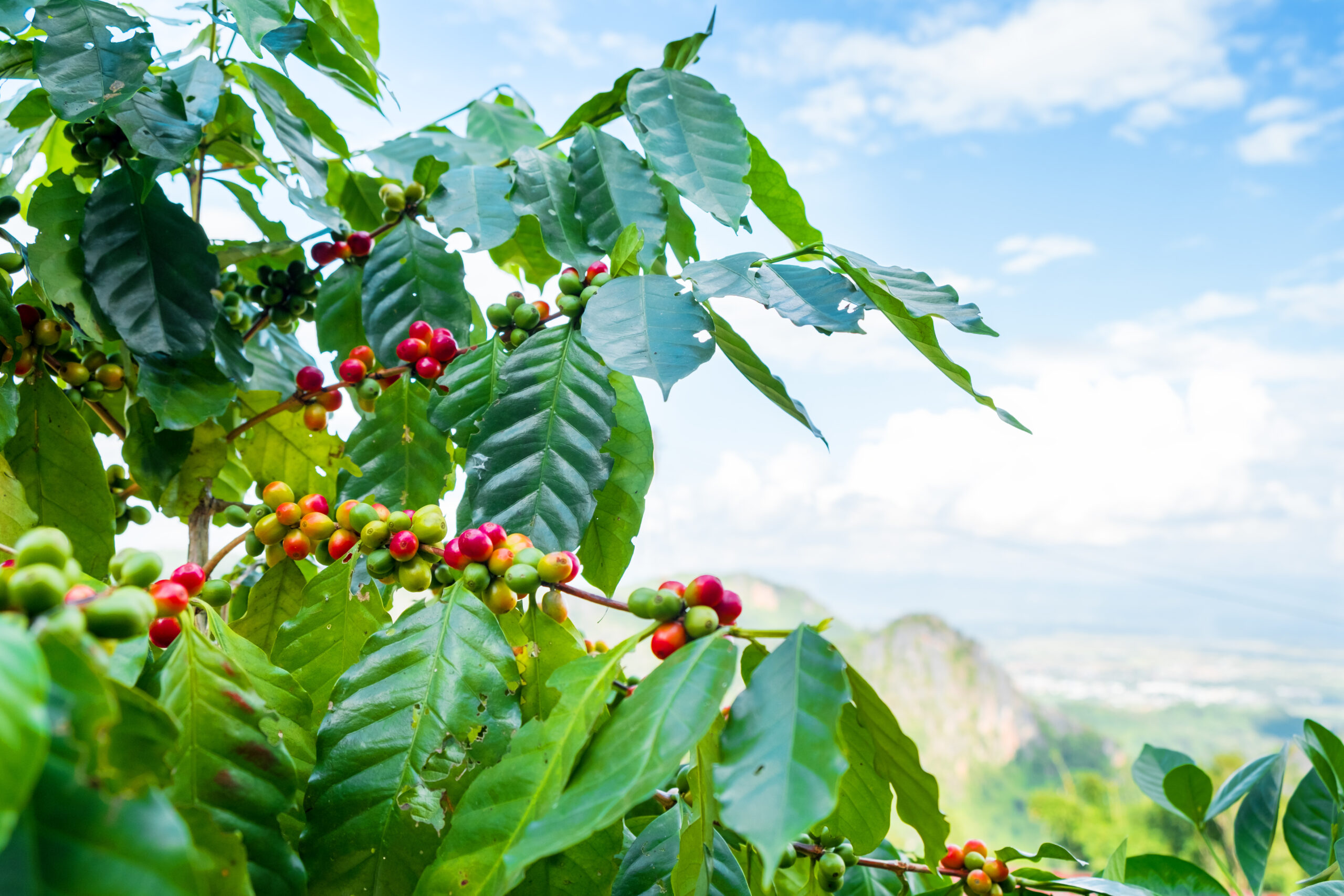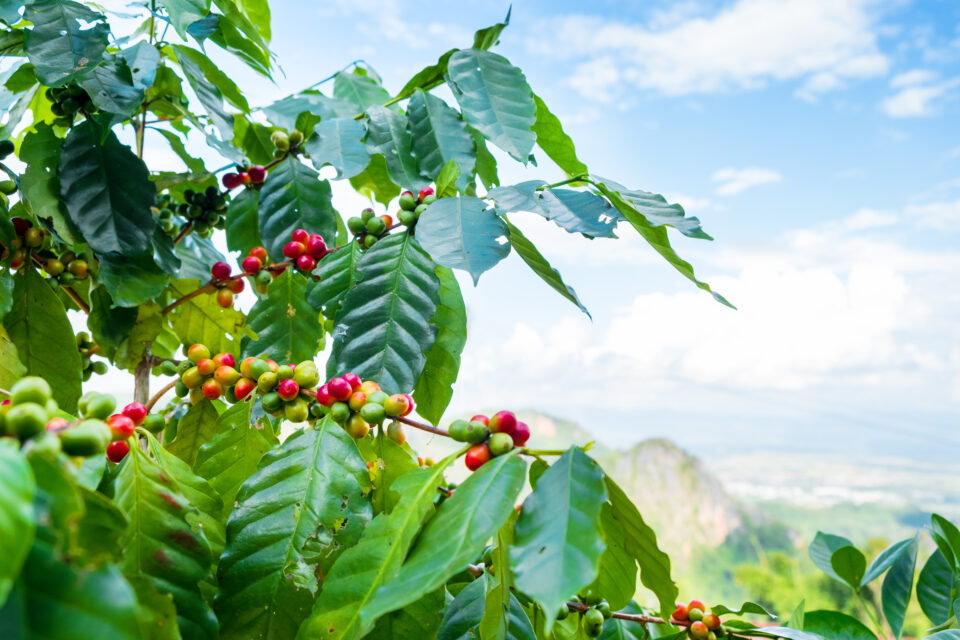If you’ve ever browsed the tea and coffee aisle in a supermarket, you may have noticed that many brands proudly display “100% arabica” on their packaging. For the more observant, you might wonder why you never see “100% robusta”. What is arabica coffee, and what makes it so special? And what's the deal with robusta coffee?
While arabica beans account for around 60% of global coffee production, the remainder primarily comes from another species called Coffea canephora, better known as robusta. It’s not that you can’t buy 100% robusta coffee beans—you absolutely can—but you probably won’t like it very much! Let’s take a closer look at these two coffee species to understand the differences in the robusta vs arabica debate.
Arabica Coffee (Coffea arabica)
Flavour Profile: Sweet, Floral, Fruity
Cultivation: High altitude, between 1,300 and 1,500m above sea level
Plant Characteristics: Glossy dark green leaves, fragrant white flowers and green fruits that ripen into bright red “cherries” containing coffee beans. Susceptible to pests, frost, and low pH soil.
Caffeine Content: 1.5%
Robusta Coffee (Coffea canephora)
Flavour Profile: Earthy, Smoky, Bitter
Cultivation: Lower altitude requirements at 200-800m above sea level
Plant Characteristics: Hardy and resistant to pests and harsher weather conditions.
Caffeine Content: 2.7%
Key Differences
Taste
Arabica beans are preferred by most coffee drinkers for their smooth, sweet, and fruity flavour. This is due to their higher concentration of lipids and sugars. However, many of the qualities that make arabica coffee so desirable also make it more challenging to cultivate.
Robusta coffee is more bitter than arabica due to its higher caffeine content. Caffeine is the key compound responsible for the strong bitterness in coffee and dark chocolate, while also serving as a natural insect repellent. As a result, robusta plants are less susceptible to pests and typically require fewer pesticides.
Growth Conditions
Arabica coffee plants require higher altitudes, where reduced oxygen levels and thinner air make it difficult for insects to thrive. By growing arabica coffee beans at elevations of at least 1,300m, farmers expose the crops to more sunlight, cooler temperatures, and better drainage. While coffee trees need subtropical conditions to flourish, the slower growth at high altitudes allows more complex flavours to develop, enhancing the taste of arabica coffee.
In contrast, robusta coffee is much hardier. It thrives at lower altitudes in warmer climates, making it easier and cheaper to cultivate. Additionally, harvesting coffee robusta beans is more efficient, as lower-altitude farms can use machinery, whereas arabica often requires manual harvesting due to the challenging terrain.
Usage
Many premium coffee brands such as illy cafe have a signature blend that is 100% arabica, but many use an arabica and robusta blend to produce both whole bean and instant coffee. This makes the product more affordable, as robusta beans are significantly cheaper to produce. Some would call them a “filler” in this situation, but that would be doing it a disservice – it isn’t without its benefits.
The Benefits of Robusta
- Fuller Espresso – While you may not want a cup of 100% robusta, a blend with around 20% robusta coffee beans is popular in Italy for creating a richer crema and fuller-bodied espresso.
- Balanced Flavour – If you enjoy a darker roast, adding robusta beans can help balance the acidity of arabica beans.
- Higher Caffeine Content – Robusta coffee contains nearly double the caffeine of arabica, making it a great option if you need an energy boost.
Long story short, don’t knock it until you try it! Despite what self-proclaimed coffee afficionados might say, good coffee is all about what tastes good to you. Whether you prefer 100% arabica or robusta blend, the best coffee is the one that tastes best to you.

